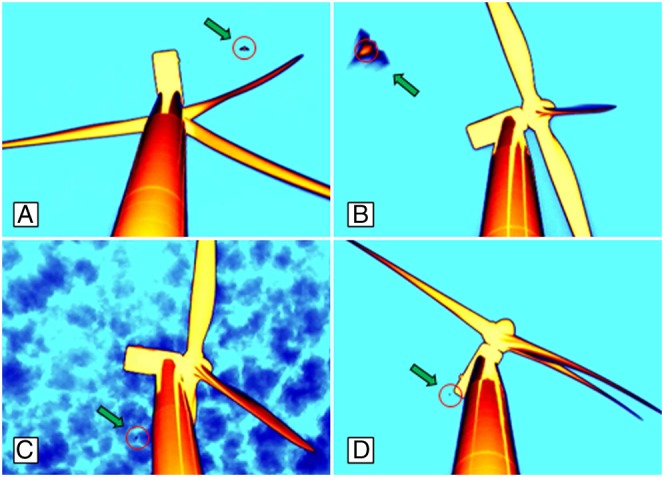Fig. 1.

Still images of night-flying bats (green arrows) at wind turbines that were detected in thermal-infrared video footage. Cameras were positioned 12 m from the base of the turbine, looking up the 80-m monopole toward the nacelle (rectangular machinery enclosure) and rotor, to which three 40-m blades attach. Red circles represent the object identified as a bat by the automated software used for finding their presence in nightly (∼10 h) video recordings. A variety of detection conditions are illustrated, including a bat approaching fast-rotating (14 rpm) turbine blades at about midtower height (A), a bat flying low (<10 m) above the camera (B), a bat approaching the leeward side of a turbine monopole in cloudy conditions (C), and a bat flying at about nacelle height in the leeward airspace on the far side of a turbine with blades rotating at full speed (D).
